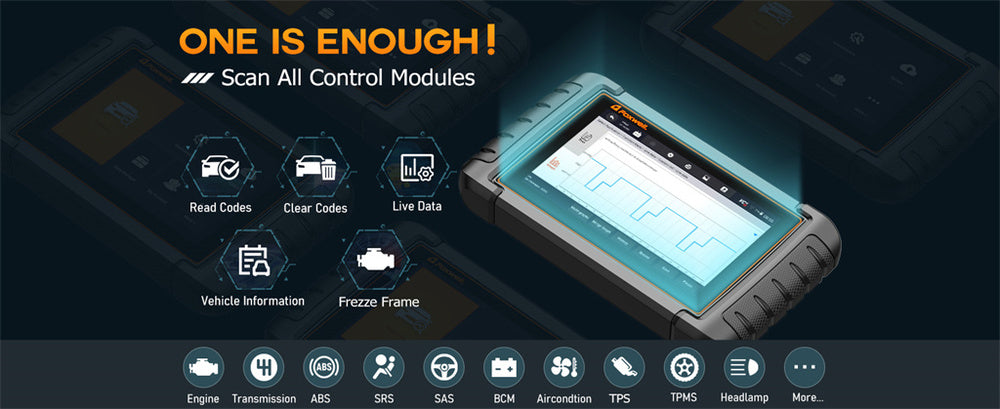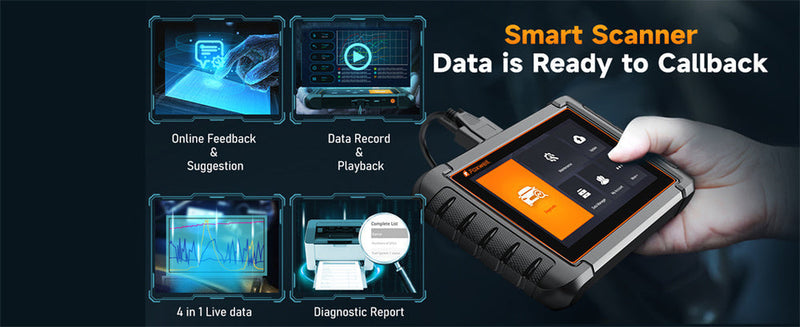You’re thinking of buying a used car. Everything seems perfect—the exterior looks great, the interior is spotless, and the engine sounds smooth. But under the surface, there might be a history of issues your eye can't catch.
That’s where diagnostic codes, like “passed and failed,” come into play. Just like a doctor’s report gives you insight into your health, these codes reveal what's really going on under the hood.
Here, we’ll explore what “passed and failed” Diagnostic Trouble Codes mean, how they affect the car’s performance, and why it’s crucial to pay attention to them when buying a used vehicle.
What Does 'Passed and Failed' Mean in DTC Code Status?

Imagine you're at a doctor’s office for a check-up.
The doctor runs some tests and gives you the results: some passed, while others failed. You’d probably want to know more—what does this mean for your health?
Similarly, your car undergoes diagnostic tests whenever a mechanic plugs in an OBD2 scanner.
These tests generate Diagnostic Trouble Codes (DTCs), which act like test results for your car’s systems.
When you see “passed and failed” status in these codes, it might leave you wondering: What’s happening with my car?
In simple terms, a “passed and failed” code indicates that an issue was detected, resolved (or seemed to be resolved), but has since reappeared.
It’s like a recurring issue that goes away but doesn’t stay fixed.
Your car’s computer is letting you know that this problem has surfaced again, and it’s something worth your attention.
How 'Passed and Failed' Status Is Generated: Understanding the Process
Your car is a complex machine, constantly running internal checks on all its systems.
It’s like a teacher giving a student a series of quizzes throughout the school year.
The student might do well on some and poorly on others.
The same happens with your car’s systems: some pass the tests (meaning they’re functioning as expected), and others fail (indicating a problem).
When your car detects an issue, it logs a DTC.
If the problem appears to go away, the system might mark it as “passed.”
But if it comes back during another test, the system updates it to “failed” again.
This creates the “passed and failed” status.
Essentially, your car is telling you, "This issue isn’t constant, but it’s recurring enough that I’m flagging it for attention."
Is a 'Passed and Failed' DTC Code Status Considered Active?
One of the most common questions when seeing a “passed and failed” status is whether it means there’s an active problem with the vehicle.
In simple terms, this status doesn’t always mean there’s a current or ongoing issue.
Instead, it acts as a warning.
Think of it as a flickering light—something’s not right, but it might not be constant.
The “passed and failed” status indicates that while a problem was detected in the past, it might not be present at the exact moment the scan was done.
However, since the issue reappeared during another test, it’s something to keep an eye on.
It’s like a problem that could pop up again, so you don’t want to ignore it.
To better understand whether this issue is still active or just part of the car’s history, you can use advanced tools like the Foxwell NT809 OBD2 scanner.
This scanner provides real-time diagnostics and can give you detailed insight into whether these codes are still relevant.
With features that allow you to perform deep system checks, you can quickly see if that “passed and failed” code is something that’s happening right now or something that’s more of a past issue.
By using tools like the Foxwell NT809, you can take the guesswork out of whether the problem is active or not, giving you more confidence in understanding your car’s condition.
The Role of OBD2 Scanners in Reading DTC Codes
An OBD2 scanner is a tool that acts like a translator between you and your car’s computer system.
The car continuously monitors itself for any problems, but it’s the OBD2 scanner that reads and decodes those diagnostic trouble codes, letting you know what’s wrong.
In the case of a “passed and failed” DTC, the scanner reveals that a problem once existed, was possibly fixed or cleared, but has now come back.
The Foxwell NT809 is an excellent example of an OBD2 scanner that provides a comprehensive overview of your car’s health.
This scanner goes beyond just reading simple codes—it gives you live data, which helps you determine if the issue is current or from a past test cycle.
It’s like having a medical report with both past and present symptoms, helping you better understand the urgency of the problem.
The Impact of 'Passed and Failed' Codes on Used Car Performance
When buying a used car, seeing a “passed and failed” DTC might cause some concern.
It’s similar to buying a used phone: if the battery was replaced once, you’d wonder if the issue will happen again.
A car with a “passed and failed” code indicates that the vehicle has dealt with a particular problem, but there’s a chance the issue may come back.
These codes can relate to anything from minor sensor issues to more serious mechanical problems like engine misfires or transmission faults.
It’s important to recognize that a single “passed and failed” code doesn’t always spell trouble.
However, multiple codes across different systems might suggest that the car has had frequent problems in the past and could require more maintenance in the future.

How to Use DTC Status Information When Buying a Used Car
When you’re in the market for a used car, it’s easy to focus on the shiny exterior and clean interior.
But what really matters is what’s going on under the hood—and that’s where DTC codes become a valuable tool.
If you have access to a Foxwell NT809 OBD2 scanner or if the dealer provides a report, you’ll want to carefully review any “passed and failed” codes.
Here’s how you can make the most of this information:
Ask for Details: If the report shows “passed and failed” codes, ask the dealer or owner about any previous repairs or service related to those systems. It’s like asking for a car’s medical history.
Check the Severity: Some DTCs are minor and won’t affect the car’s performance in the long run. However, if there are codes related to critical systems like the engine or transmission, take them seriously.
Consult a Mechanic: A trusted mechanic can help interpret the codes and give you an idea of whether these issues are recurring or if they’re unlikely to return.
Tools like the Foxwell NT809 give mechanics a detailed view, so they can offer you a more accurate assessment of the car’s condition.
Should You Be Concerned About 'Passed and Failed' DTC Codes in a Vehicle Inspection?
Not every “passed and failed” code is a cause for concern.
Think of it as a minor health issue—something that needs to be monitored but doesn’t always require immediate action.
However, it’s essential not to ignore these codes, as they provide a window into the car’s diagnostic history.
The presence of multiple “passed and failed” codes might suggest underlying issues that could affect the vehicle down the line.
Conclusion
Diagnostic Trouble Codes with a “passed and failed” status are like breadcrumbs left by your car’s computer, giving you clues about potential issues.
Whether you’re buying a used car or just checking up on your own vehicle, these codes are your car’s way of communicating that something might not be quite right.
Using tools like the Foxwell NT809 OBD2 scanner, you can stay ahead of potential problems, making sure small issues don’t turn into bigger, more expensive repairs.
When it comes to understanding your car’s diagnostic codes, being informed gives you the power to make better decisions—whether you’re behind the wheel or in the market for a new set of wheels!
FAQs
How do you read a DTC report?
You can read a DTC report by connecting an OBD2 scanner to your car’s diagnostic port. The scanner will pull up trouble codes that indicate potential issues. Each code corresponds to a specific problem area within the car, which can then be cross-referenced with the scanner's manual or online resources to understand the issue.
What does "no DTC found" code mean?
When you see "No DTC Found," it means the car's onboard computer didn't detect any active or stored error codes at the time of the scan. Essentially, the car's systems aren't reporting any problems.
What is the DTC car error code?
A DTC (Diagnostic Trouble Code) is a specific code that represents a problem in your car's systems. These codes are stored by your car’s onboard computer and help mechanics or car owners pinpoint mechanical or system failures, such as issues with the engine, transmission, or emissions.





Leave a comment
This site is protected by hCaptcha and the hCaptcha Privacy Policy and Terms of Service apply.